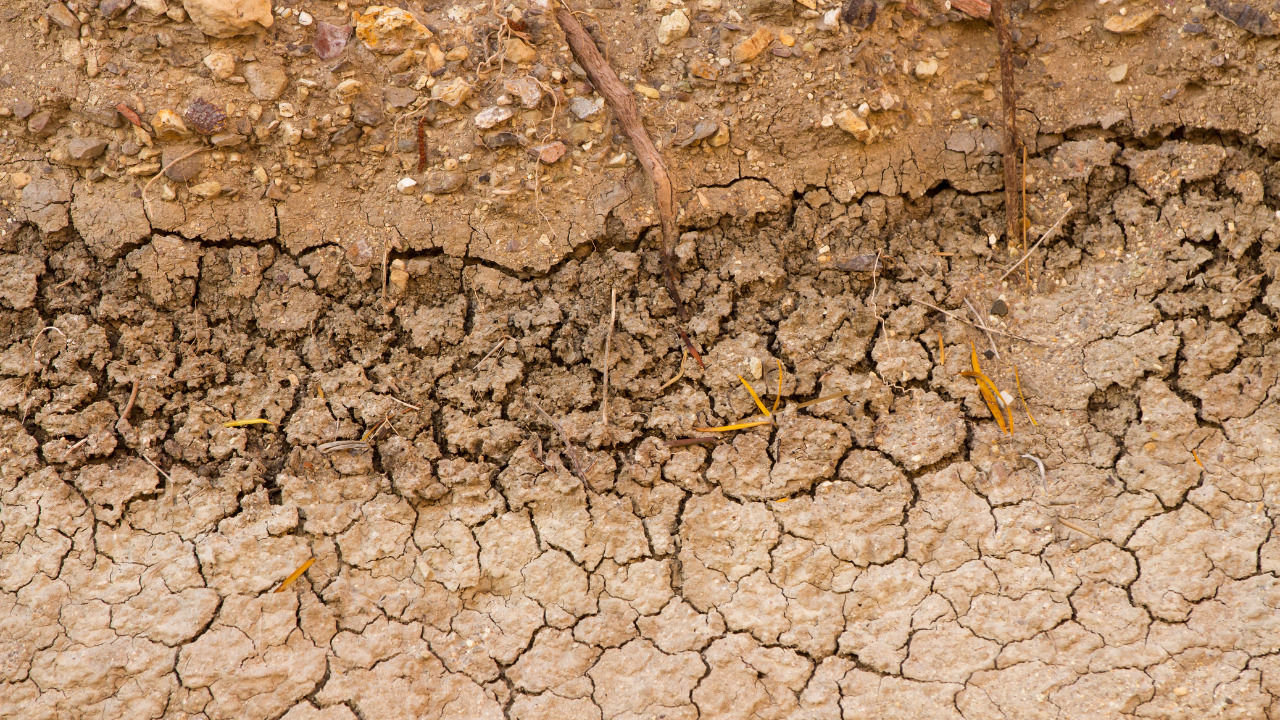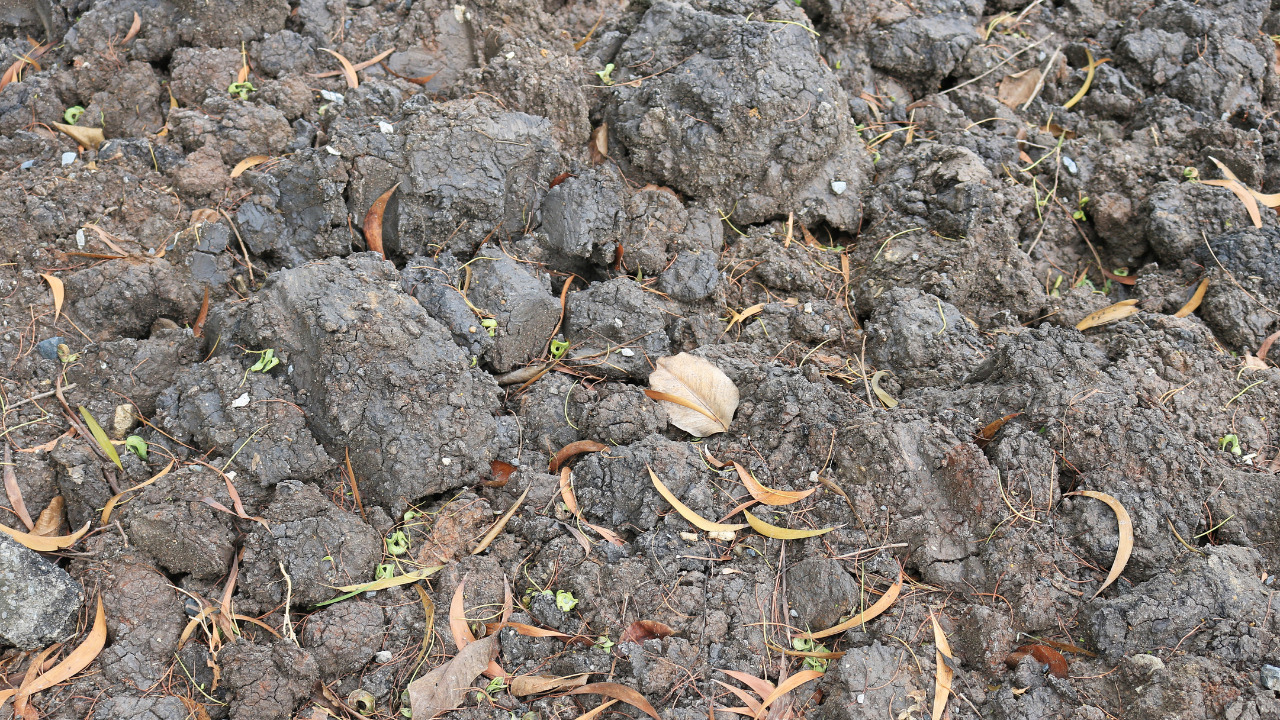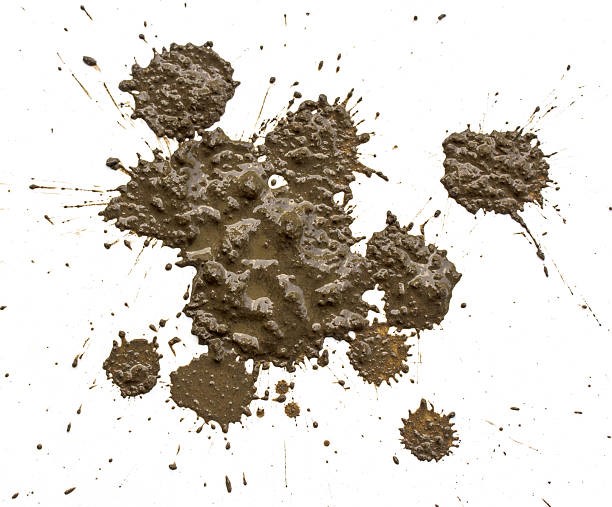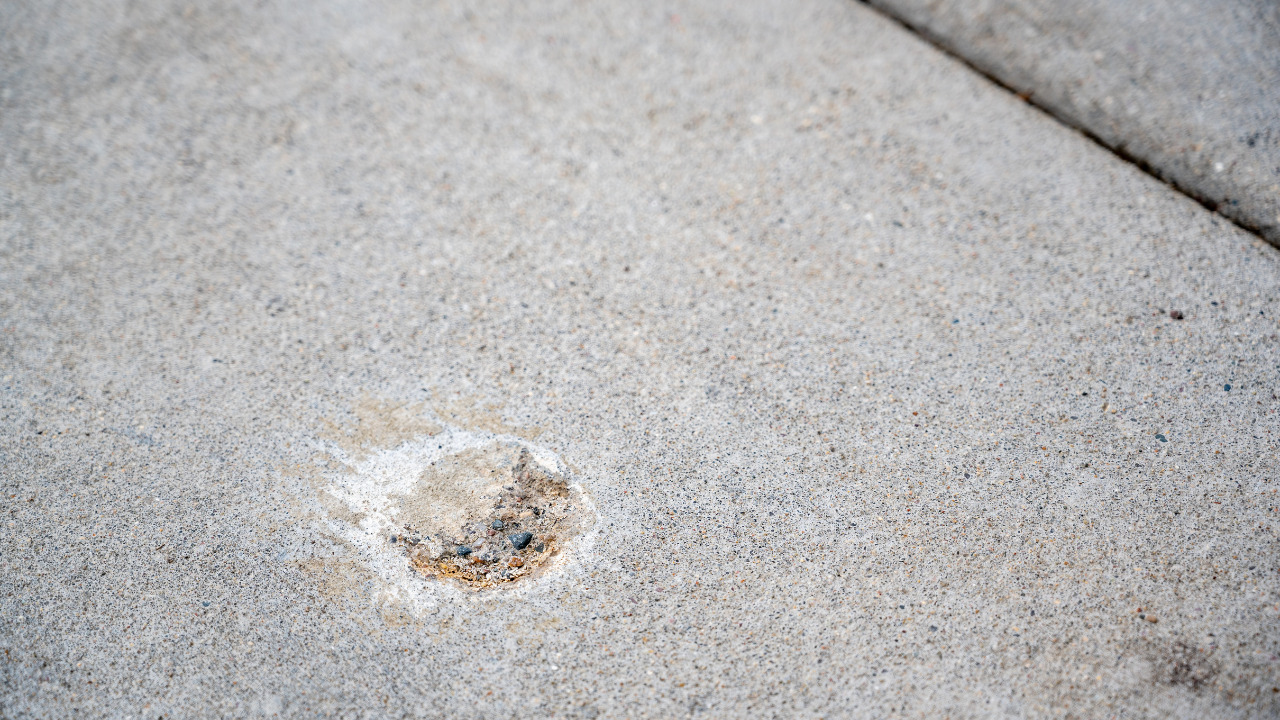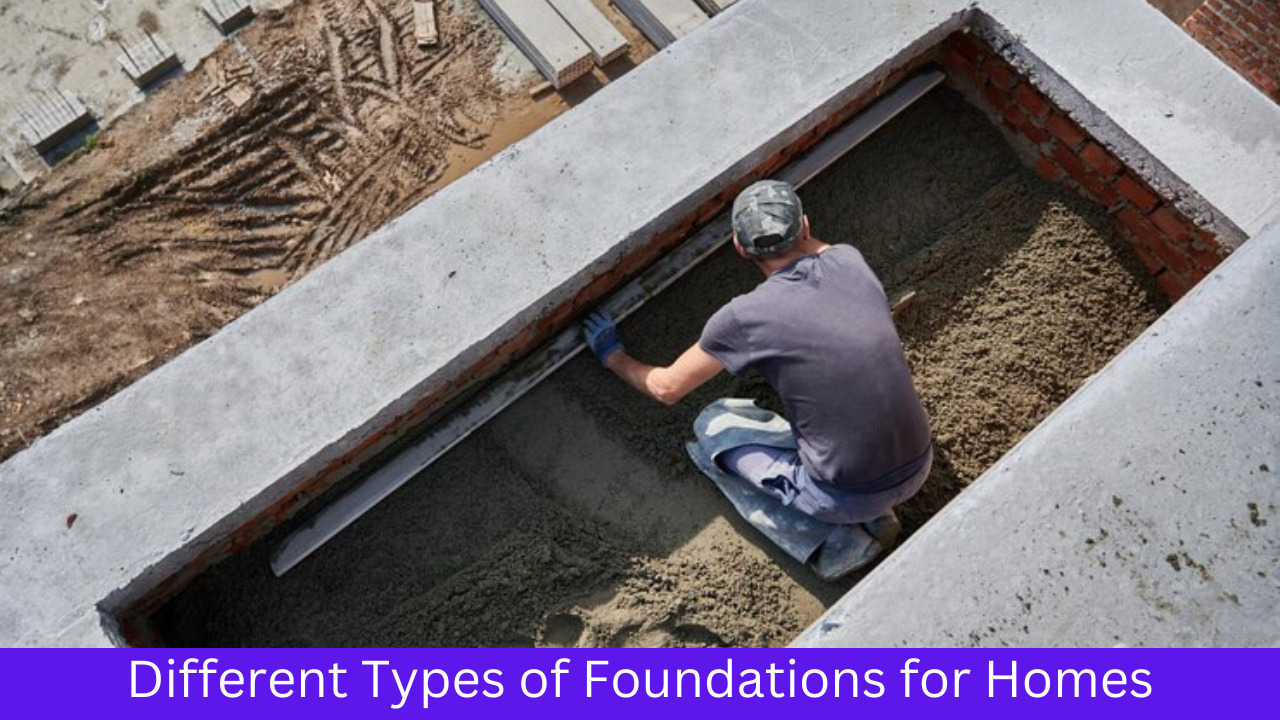A concrete slab, under certain environmental and loading conditions, becomes prone to deflection owing to a number of reasons. These include ground (or subgrade) settlement, root damage or soil erosion.
Do you know any corrective measures or repair techniques for such a partially sunken slab? Well, if you are short on an answer, we will tell you a method wherein a slab or a part of it can be levelled up if it gets settled.
But before we jump into what exactly this method is, let us first discuss in detail about why concrete slabs or a part of them do ever settle or sink?
Table of Contents
Reasons for Concrete Slab Settlement or Deflection
The reasons can be numerous; however, the following are the main ones;
-
Weak Underlying Soil
If the soil underlying the concrete slab is weak or unstable, it will cause settlement of the slab after sometime. Therefore, before you construct a slab, do check for the soil’s bearing capacity.
-
Soil Erosion
If the soil present beneath the slab gets eroded or washed away by any eroding agent, the soil will make space for the slab to settle or deflect.
-
Poor or Inadequate Compaction
Whenever a concrete member is cast on-grade, it is important to compact the soil otherwise when the soil is loaded, it will get compacted under the superimposed load and this will lead to the settlement of the overlying concrete slab.
Compaction of soil can be done by any equipment, depending upon the size of your project. You can either go for rollers or tampers, but before you do so, do check for the soil type and stability.
-
Fluctuations in Moisture Content
Some soils such as clays, are sensitive to change in moisture content. If this happens so, the soil expands or contracts and this may lead to stresses in the overlying slab and even cause its settlement.
-
Presence of Organic Matter in the Underlying Soil
If the underlying soil has organic content or any debris, it will decompose over time, leading to voids in the soil. These voids will get crushed under the applied slab loading, causing settlement is settlement.
Therefore, you must ensure the soil composition beforehand to avoid any repair later on.
-
Inefficient Drainage
Prolonged contact with water owing to inefficient drainage may lead to erosion of the soil. This in turn can cause slab settlement.
-
Poor Construction Technique Adopted
If the slab itself is not constructed well and either lacks steel reinforcement or has inadequate thickness, it will deflect or settle over time.
Now, having known the possible causes of deflection, the next question is how to repair such as slab? Is it always viable to go for reconstruction or do we actually have a corrective measure in store? The answer to this is that reconstruction or recasting of slab is the last option and we do have some methods of amending a deflected slab.
One such technique is mud jacking. Sounds new? Well, we have your curiosity covered.
What is meant by Mud Jacking?
Mud jacking is a process that is used at site to lift a concrete slab or a part of it and bring it to the original level. Oftentimes, the concrete slab of your driveway, patio, or any sidewalk may settle. To lift such a settled slab, a cement-based slurry comprising cement, soil and water is injected underneath the settled slab by drilling small holes on the slab surface.
The pressure of the injected slurry is pivotal as it governs the lifting process and provides a stable base. Once the required pressure it applied by the slurry, it pushes the slab up and in this way, you can get the slab back to the original level. Sounds amazing, right!
Mud jacking is a very cost-effective solution instead of going for recasting of the slab or its replacement by another precast slab. This is because the latter techniques are costly in addition to being time-consuming.
The slurry that is injected, add to the durability of the concrete slab, since it becomes an integral part of the soil that bears the applied loading. This imparts longevity to the slab while stressing your back account less.
Properties of Injected Slurry that You Must Ensure
The properties of slurry used will depend upon the soil type, the slab size and the size of the voids that have caused settlement. However, being the vital component of the process, there are a few general properties of the slurry that must not be compromised.
- The consistency or viscosity of the slurry should be given due weightage. You cannot make a very fluid-like slurry and expect it to jack up your slab. Similarly, it should not be very thick to make it difficult to flow through the injection equipment.
- The slurry should be stable and not get segregated when injected into the voids. It should uniformly fill in the voids without bleeding water.
- It should be able to apply a compressive force against the slab to lift it up.
- It should possess sufficient strength when it hardens. This is important because once your slurry will harden, bringing your slab in place, a part of your slab will then be resting on this hardened paste. If it will not be of a good quality, it will crumble and under the slab load, making your efforts for naught.
- The adhesive property of slurry is important to enable it to gel with or stick to the slab. If that is not the case, it will disintegrate over time.
Why is Mud Jacking named so?
The word mud jacking derives its origin from the fact that a mud-based cement slurry is used to jack up or lift the sunken concrete slab through hydraulic pressure application. The slurry has a mud-like appearance and it comprises soil, cement and water thoroughly mixed up.
Mud jacking is also sometimes termed as pressure grouting or slab levelling. However, it is different from the process of slab jacking, which is another repair method for sunken slabs.
What is the Process of Mud Jacking?
Here is the step-by-step process for carrying out mud jacking on site;
- You should start off by preparing the area surrounding the sunken slab. This includes removing any grown vegetation and cleaning the area so that nothing prevents the slurry from sticking to the concrete slab.
- On the surface of the concrete slab, drill small holes at different spacing. The number of holes and their size will depend upon the slab size and the amount by which it has sunken. Nevertheless, the holes should not be too close to create an area of weakness and not too far apart to make the jacking or lifting operation difficult. As a general rule, the hole diameter can be 1 to 2 inches and the holes can be spaced at a distance of 3 to 6 feet.
- Prepare the mud slurry using soil, water and cement and make sure you have got the right consistency.
- Using specialized equipment, inject the slurry into the drilled holes under high pressure that forces the slab up and back into its place.
- Once you have lifted up the slab to the required height, fill the holes with a cement mixture to close them up. This is called patching up the holes.
- Allow the patching material to set and dry. Following this, clean up the area and remove any debris.
Slab Jacking vs Mud Jacking; Know the Difference
It is often touted that slab jacking and mud jacking are the same thing. However, that is not true in its essence. Both of these techniques are used to repair or lift up sunken slabs but there are slight differences between the two techniques that we shall discuss herewith.
- The size of drilled holes for slab jacking is less (of the order of around 3/8 inches) in comparison to that for mud jacking. This is because in the latter case, the slurry is relatively thicker and requires a greater hole area to efficiently fill in the voids and apply pressure on the slab.
- In case of slab jacking, the injected material is a high-density polyurethane foam that sets up immediately and it is going to resist all moisture from punching through it into adding more weight to it. The foam is strong enough to lift commercial garages, highway slabs, etc. and adds to the stability of the slab. On the other hand, for mud jacking the injected slurry is a cementitious material that may comprise limestone, cement, sand and water.
- In most cases slab jacking offers permanent durability because the foam weighs less than the mud slurry. The mud jacking process remains effective for 5 to 10 years because the slurry can decay, disintegrate, erode or sink.
- With slab jacking, the curing time gets significantly reduced. You may only require less than an hour in this case whereas hours or even days are required for curing in mud jacking process. This is because the foam sets up quickly and the mud slurry needs more time to set up.
- With slab jacking, you may pump some material from time to time but this becomes difficult in mud jacking because any sequent process of drilling will require drilling all the way through the hardened material.
Cost of Performing a Mud Jacking Operation
How much will it cost to jack up your slab will depend upon a number of factors such as the slab size, the amount by which the slab has sunken, the underlying soil properties, and the complexity of the work on site. Similarly, if the project is in a remote location, transporting specialized equipment on site will add up to the cost.
However, since mud jacking is a swift process in comparison to total replacement of slab, you will get to save some money on it as a result.
How to Determine if Your Slab Needs Mud Jacking?
By now, you must be thinking that the slab of your driveway or patio has sunken and how about going for a mud jacking operation. Well, hold on; here is what you need to check before you decide on going for mud jacking.
Mud jacking will prove to be a financial punch if your slab has significantly aged and cannot take up more load. You need to figure it out if the slab has still life in it, can perform well and just needs a hand to pull it up (or rather a thrust from beneath to push it up, sounds hilarious, right?).
Secondly, if the slab has signs of severe cracking, do not go for mud jacking if it has settled. This is because you are simply addressing the surface-level problem and not the root-cause and most likely, the slab will settle again even if jacked or lifted up.
Whatever signs of defects you see on your slab, you must not ignore them because they are red signals and will lead you to the root cause of the damage. If you simply sign up for a mud jacking process thinking it will put an end to your slab’s misery, you might add up to the slab’s instability. So, don’t do this; you are smart, we know!
Advantages of Mud Jacking Process
The technique of mud jacking proves to be very effective in repairing existing slabs that get deflected or settled due to some reasons. The following are the key advantages of this process;
- Mud jacking is a very cost-effective method of repairing slabs in comparison to other methods such as partial or full replacement and recasting, slab jacking, etc.
- The process takes very less time and you may bring the area into serviceability immediately after the operation of mud jacking is completed. This can reduce the time required and also the disruption caused meanwhile.
- In areas where you have landscaping, the operation of mud jacking will least disturb the aesthetics and is minimally destructive. In other words, you can preserve the aesthetics of your area because with mud jacking, only small holes are drilled into the slab which later can be filled easily.
- The mud-based slurry is a durable solution and if it possesses the right properties, it will keep your slab in place for a long time without the danger of any imminent settlement. In this regard, mud jacking proves to be a durable and long-lasting solution.
Disadvantages of Repairing Slab with Mud Jacking
Despite being a cost-effective solution for repairing slabs, the process of mud jacking also has some potential disadvantages. These are discussed as follows;
- The process of mud jacking has limited effective for heavily damaged or deflected slab. This is because lifting up a large area with mud slurry is a difficult task and oftentimes the slab will become prone to settling again. Therefore, in such cases, removal and replacement (recasting) is a better option.
- If the slab is weak or has aged, the pressure from the injected slurry may actually induce cracking in it.
- Mud jacking does address the problem of a settled slab but if the underlying soil is not stable, doing so will not prove to be a long-term solution. In such cases, the problem of the soil needs to be addressed first because mud jacking will not do so.
- If multiple slabs have sunken, a lot of drilling operation is required and this might make ethe process costly.
- Mud jacking will not work if your slab has pot holes or other forms of severe cracking.
Frequently Asked Questions (FAQs)
Can mud jacking be done as a DIY project?
You can go for mud jacking a slab on your own by renting the equipment needed. However, we do not recommend doing so if the slab has severely deflected to sunk. This is because a great deal of skill is required for such work.
Is slab jacking better than mud jacking?
Slab jacking is definitely better than mud jacking for reasons such as enhanced stability and better injecting material. The foam-like material that is injected in case of slab jacking is a win-win situation. It not only helps lift the settled slab but also integrates well with the slab. It provides a durable solution and increases the service life of the slab.


